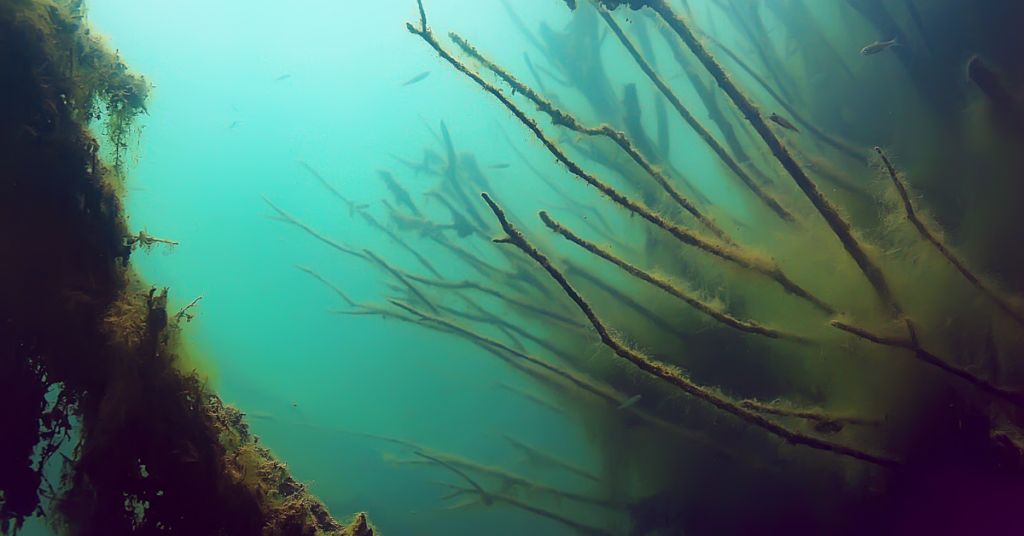Ocean acidification is the lowering of the pH of all oceans on earth. The ocean absorbs about 25% of the carbon dioxide, or CO2, from the atmosphere, and as the amount of CO2 in the atmosphere increases, so does the amount of CO2 absorbed by the ocean.
So, as the amount of greenhouse gases increases, not only does the temperature of the ocean begin to rise, but the increase in CO2 levels causes the pH of the ocean to fall.
Increased acidic conditions cause a variety of detrimental effects, from limiting skeletal formation for marine organisms to limiting coral growth and corrosion of existing coral skeletons.
While natural carbon dioxide levels are fine, the main problem is the excess CO2 that humans produce by burning fuels. This is mainly because CO2 produces carbonic acid when it dissolves in seawater (CO2 + H2O > H2CO3). Although carbonic acid is not as strong an acid as e.g.HCl always acts like an acid by donating protons and interacting with surrounding molecules. Now, when excess acid is added to a solution, it will cause that solution’s pH to drop or become more acidic, and while H2CO3 is not considered a strong acid, it still has the potential to massively affect the overall chemical makeup. the marine environment.
The lower the pH of a solution, the higher the concentration of H+ ions in that solution.It has become a major problem for many species. Chemical reactions can be extremely sensitive to changes in pH; In the ocean, however, these pH changes can affect marine life through chemical communication, reproduction, and growth. In particular, the structure of the skeletons in marine life is extremely sensitive to any change in pH.
Therefore, the recent increase in CO2 levels, which has caused a more acidic environment, has had a major and negative impact on the growth of new shells.
This is because hydrogen ions easily combine with carbonate molecules (CO3 2) to form carbonic acid, and a sea creature’s shell is made of calcium carbonate (CaCO3). In order for sea creatures to build shells, they take up calcium ions (Ca2+) with a carbonate molecule from the surrounding seawater to form the calcium carbonate needed to build their shells.
So instead of the carbonate dedicating all of its attention to calcium so that the sea creature can build its shell, it now devotes more of its attention to the hydrogen ion. In addition, hydrogen ions have a greater attraction for carbonate than a calcium ion for carbonate, and when two hydrogen ions bind to carbonate, a bicarbonate ion is formed, and a marine animal does not have the ability to extract only the carbonate ion.
Ultimately, this prevents sea creatures from building new shells on their own, and even if the sea creature has the ability to build a new tank, it takes a lot of energy to do it and essentially takes away other important processes.
Not only can this affect the formation of new layers, but under the right conditions it can also corrode existing layers. If there are too many hydrogen ions floating around and not enough molecules to bond with, they can actually start breaking down the calcium carbonate molecules already there, ultimately breaking down the shell of the sea creature already there.
Another organism feeling the effects of ocean acidification is coral. Like other marine animals that build their homes from calcium carbonate, reef corals use calcium carbonate to build their own bodies and structures. These reef-building corals are also home to other corals and other organisms.
As mentioned above, increasing acidification severely limits the growth of new coral and eats away existing coral reefs. Even if a coral reef has weathered the odds and been able to grow, it will be a weaker reef, subject to natural erosion.
Healthy coral reefs have been predicted to erode faster than they can reproduce by mid-century. This is bad news for the species that live on these coral reefs. Unless these species can grow and develop in a secure settlement such as the coral reef, these larvae will not be able to reach adulthood and thus will not reproduce. This will ultimately lead to mass extinctions in the future.

Erzsebet Frey (Eli Frey) is an ecologist and online entrepreneur with a Master of Science in Ecology from the University of Belgrade. Originally from Serbia, she has lived in Sri Lanka since 2017. Eli has worked internationally in countries like Oman, Brazil, Germany, and Sri Lanka. In 2018, she expanded into SEO and blogging, completing courses from UC Davis and Edinburgh. Eli has founded multiple websites focused on biology, ecology, environmental science, sustainable and simple living, and outdoor activities. She enjoys creating nature and simple living videos on YouTube and participates in speleology, diving, and hiking.

